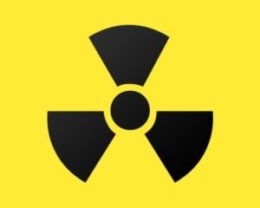You can’t see it. You can’t smell it. You can’t taste it. It could be present at a dangerous level in your home. What’s even more frightening—it’s the leading cause of lung cancer deaths among nonsmokers in the U.S., claiming 21,000 lives each year.
What is this invisible killer? Radon Gas.
Radon (Rn) is a radioactive, colorless, odorless, tasteless noble gas. It’ produced by the radioactive decay of radium-226, which is found in uranium ores, phosphate rock, shales, igneous and metamorphic rocks such as granite, gneiss, schist, and limestone. Every square mile of surface soil contains about one gram of radium, which releases radon in small amounts into the atmosphere. It is measured in picocuries per liter (pCi/L) of air with an acceptable level being four or lower. It occurs naturally almost everywhere.
Why is it so dangerous?
Radon, under normal conditions, is gaseous and easily inhaled. It’s the heaviest of the noble gases, causing it to accumulate in low points of buildings, such as basements and crawl spaces. It is also highly water soluble allowing it to easily seep into groundwater. Due to geological factors, the level of the radon
gas hazard differs by location. It is found in all 50 states with Iowa having the highest average concentrations and the Appalachian Mountain area of southeastern Pennsylvania coming in a close second.
Epidemiological studies have shown a clear link between breathing high concentrations of radon gas and the instance of lung cancer. The EPA considers radon gas a “Class A” carcinogen. They, along with the U.S. Surgeon General, urge all Americans to protect their health by testing their homes for radon.
How can I protect myself from radon gas exposure?
Exposure to radon is a preventable health risk and testing radon levels in your home is the only way to detect it. If a high radon level (over 4 pCi/L) is detected in your home, the good news is, you can take steps to fix the problem. You can also help by spreading the word about the health risks of radon and encourage others to test their homes.
Where can I get a test kit?
- Discounted test kits are available from the National Radon Program Services.
- Online at www.sosradon.org
- By calling 800.SOS.RADON (800.767.7236)
- You can also contact local agencies within your state that might offer discounted or even free test kits. You can find a listing of contacts for state at www.sosradon.org/state-radon-contact-map
- Many home improvement stores also sell test kits at an affordable price.
Once you obtain the test kit, be sure to follow the directions on the packaging for the proper placement of the device and where to send it afterward for processing. It is important to note that radon levels can fluctuate due to transient weather conditions. If your initial test reading is over 4 pCi/L, it is worth repeating the test or performing a more comprehensive long-term test prior to undertaking an expensive mitigation project.
Should I hire a professional?
If you are not comfortable performing the test yourself, you can also hire a credentialed radon service provider to perform the test. These professionals can also assist with mitigation, if your radon readings come back higher than 4 pCi/L.








Leave A Comment